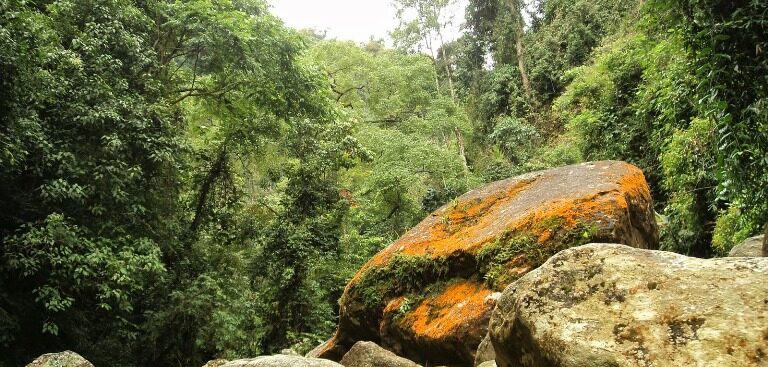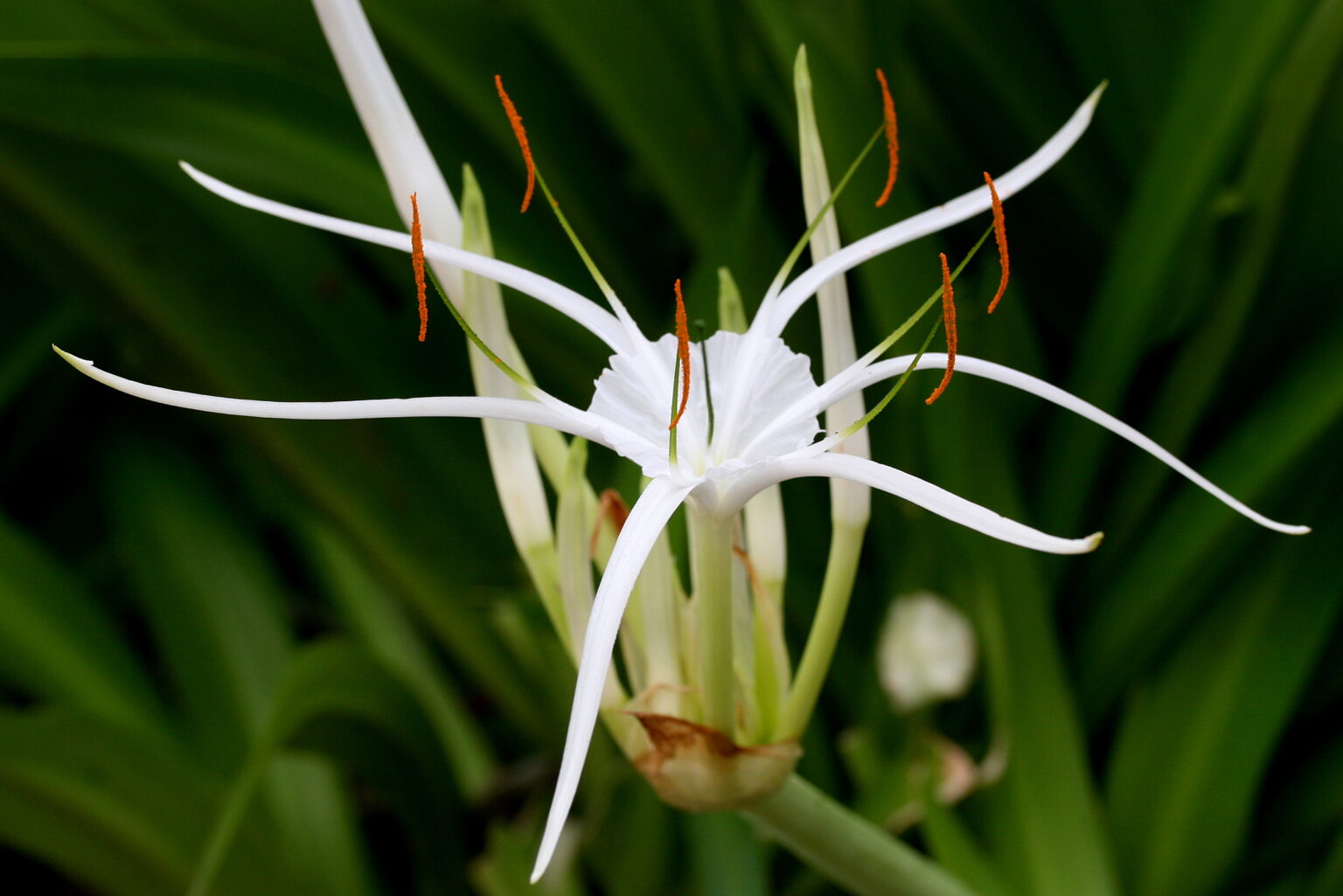
Che Tao Species and Habitat Conservation Area – source: https://www.yenbai.gov.vn/
Che Tao – Mu Cang Chai Species and Habitat Conservation Area is located in the communes of Che Tao, Nam Khat, Pung Luong, Lao Chai, De Xu Phinh, about 10km south of Mu Cang Chai town. The conservation area is an arc formed by a high mountain system from 1,700 – 2,500m, surrounding Che Tao commune and the headwaters of Nam Chai river, this is the protective forest area of the Da river system. Mu Cang Chai’s stream and creek system is quite densely distributed, giving the nature reserve a cool, fresh climate. Although located entirely in the tropical monsoon belt, due to the dominant terrain, Che Tao area has a distinct subtropical climate regime that strongly affects atmospheric circulation, creating a big difference in regional climate differentiation: this area often has many storms, hail, clouds and frost. This has a significant impact on the distribution, as well as the growth and development of flora and fauna here. Based on the altitude, these forests can be divided into three different types: low mountain forests, high mountain forests and high mountain dwarf forests. Of which:
Low mountain forests are at an altitude of 700 – 1800m, with an area of 210ha of primary forest. This type of forest has a continuously changing canopy and reaches a height of 20 – 30m. The main components are chestnut, magnolia, and cochineal trees. The canopy layer reaches up to 40 – 50m with broad-leaved trees of the chestnut, camphor and coniferous families, and po mu. The layer below 20m is young individuals, along with temperate shade-loving trees. Common epiphytes are ferns, aroids, and orchids.

Hymenocallis littoralis (Jacq.) Salisb. – Author Pham Ha Thanh Tung
The high mountain forests extend from an altitude of 1,600m to 2,300m. This type of forest is almost untouched and unaffected by the subtropical climate. Their structure is similar to that of the low canopy and they have not yet surpassed the canopy. The canopy has an altitude of 15-25m, the species composition is similar to that of the low mountains, including species in the chestnut, camphor, and magnolia families. However, the high mountain communities also have some conifers that are not present in the low mountain forests.
Alpine dwarf forests account for 4% of the total forest area and 2% of the reserve area, however, this vegetation only grows above an altitude of 2,300m. The climate here is quite harsh and specific, so the species diversity and forest structure are not complicated. The forest has only 2 layers, the lower layer (5-10m), the thick surface layer consists of dwarf bamboo bushes, mosses, and ferns. Some epiphytic plants found here are: ferns, lichens.
Located on the majestic Hoang Lien Son mountain range, Che Tao forest is considered the most beautiful primeval forest because it is still quite intact with many broadleaf and coniferous trees and rich vegetation, along with 788 species of higher plants, rich and highly endemic animals, especially with black gibbons, red-necked hornbills, purple pheasants, gray langurs… Especially on the eastern mountain top, there is a valley nearly 1km2 wide, very flat, mixed subtropical broadleaf and coniferous forest with some dominant tree species such as ironwood, cottonwood, re huong, and Lao oak with a diameter of 2 – 3m.
The reserve has a high diversity of plants. Through the results of 3 surveys by the Fauna and Flora International (FFI), 788 species of vascular plants belonging to 480 genera, 147 families and 5 phyla were recorded, of which 33 species are rare and listed in the Vietnam and World Red Books. Of these, 2 species are endangered, 4 species are threatened with danger, 7 species are rare, and 190 species of timber belonging to 54 families, mainly rosewood and mixed wood.
Also here, an investigation has discovered 267 medicinal plant species according to the experience of traditional ethnic medicine. These medicinal plants can be used in remedies and oriental medicine prescriptions to treat many diseases of bone and joint pain, digestive tract diseases, respiratory tract diseases, liver and kidney diseases, colds and skin diseases… In the flowering season, the forest is covered with beautiful blooming rhododendrons and orchids, you can look at them all day without getting bored. The animals in the reserve are very rich and show high endemism, especially the jet-black gibbon.
The surveys have recorded 241 species, 74 families, 24 orders of vertebrates, including 54 species of mammals, 132 species of birds, 26 species of reptiles, 26 species of amphibians, especially 42 rare species of animals in the Vietnam Red Book and 28 species at the level of global threat. More notably, the black gibbon species currently in Vietnam has only about 120 individuals, while in Che Tao forest there are 100 individuals; there are up to 127 species of birds such as pheasants, woodpeckers, owls, eagles, and 41 species of babblers such as: striped babbler, rufous-headed babbler, stump-tailed babbler, red-tailed dwarf babbler, etc.
Around the primeval forests are the habitats of the majority of Mong ethnic people, accounting for 90% of the population, divided into four groups: Mong Do (White Mong); Mong Du (Black Mong); Mong Linh (Flower Mong); Mong Si (Red Mong) with a rich and unique folk culture reflecting the awareness of real life associated with nature and the typical cultural features in folk songs such as: love songs, weddings, lullabies, especially Mong folk songs through the sound of Mong flutes have touched the hearts of many tourists. After the journey to explore the primeval forest, tourists return to the Mong village to eat men men, sticky rice, bamboo rice with bamboo shoots, chili and wild vegetables, drinking a bowl of corn wine with the warm affection of the highland people, it is wonderful.
Coming to Che Tao – Mu Cang Chai Species Habitat Conservation Area, even just once, visitors can feel the richness of nature, the uniqueness of culture, the warmth of humanity. The road to Che Tao forest is far and difficult to travel but very interesting. The scenery changes continuously on the way from beautiful terraced fields to white foam waterfalls and the murmuring sound of streams, the sound of wind blowing through the forest creating an instrumental music that is sometimes melodious, romantic, and sometimes majestic. With its diverse and rich natural tourism potential, Che Tao – Mu Cang Chai Species Habitat Conservation Area will create a large cultural and ecological tourism space in the West of Yen Bai province.
Source: Department of Natural Resources and Environment



